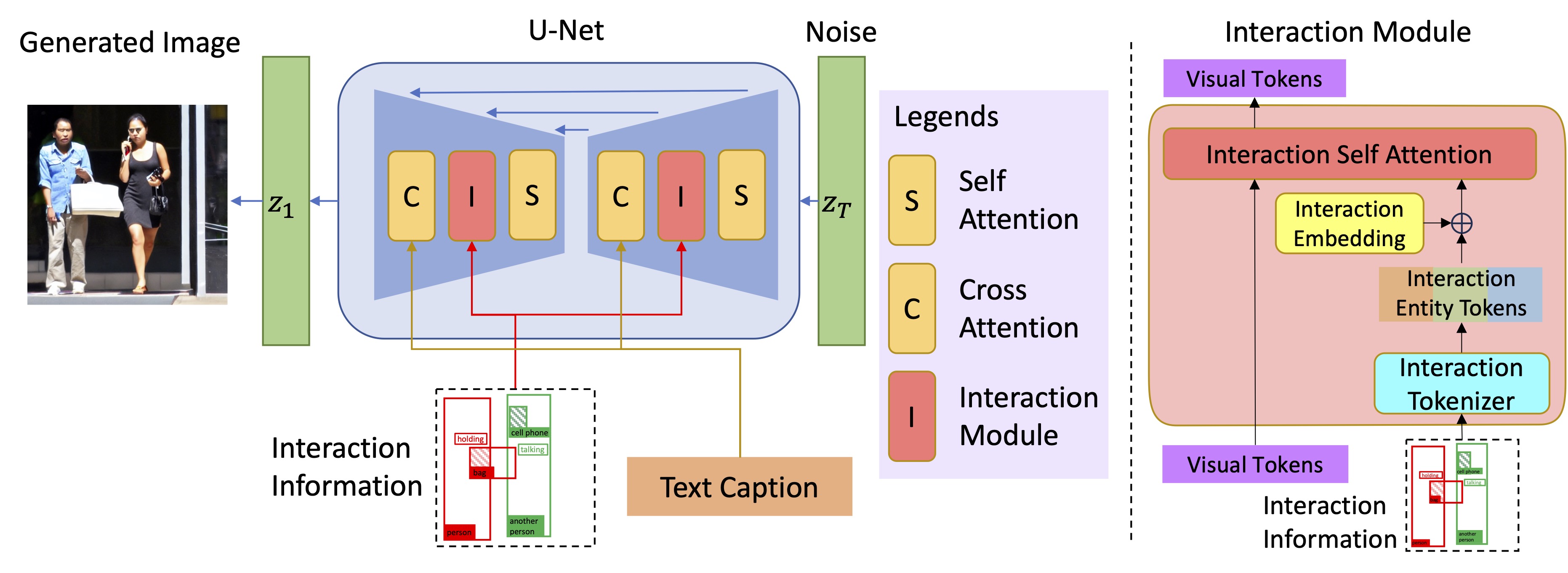Large-scale text-to-image (T2I) diffusion models have showcased incredible capabilities in
generating coherent images based on textual descriptions, enabling vast applications in
content
generation. While recent advancements have introduced control over factors such as object
localization, posture, and image contours, a crucial gap remains in our ability to control
the
interactions between objects in the generated content. Well-controlling interactions in
generated images could yield meaningful applications, such as creating realistic scenes with
interacting characters. In this work, we study the problems of conditioning T2I diffusion
models
with Human-Object Interaction (HOI) information, consisting of a triplet label (person,
action,
object) and corresponding bounding boxes. We propose a pluggable interaction control model,
called InteractDiffusion that extends existing pre-trained T2I diffusion models to enable
them
being better conditioned on interactions. Specifically, we tokenize the HOI information and
learn their relationships via interaction embeddings. A conditioning self-attention layer is
trained to map HOI tokens to visual tokens, thereby conditioning the visual tokens better in
existing T2I diffusion models. Our model attains the ability to control the interaction and
location on existing T2I diffusion models, which outperforms existing baselines by a large
margin in HOI detection score, as well as fidelity in FID and KID.






